FTA initiative “COVID-19 Rapid Research Response” reveals range of consequences
In March 2020, the CGIAR Research Program on Forests, Trees and Agroforestry (FTA) launched a “COVID-19 Rapid Research Response” to better understand and assess the main impacts of COVID-19 and of pandemic response measures across the board, aiming at developing ways to build new resilience to the unprecedented. Detailed results of these studies were presented in a special seminar on the 6th of September.
This first set of FTA studies (some published, others yet to be released) looked at diverse forests, trees and agroforestry sectors and value chains across three continents. They focused on diverse value chains (from shea, to wood fuel), passing by wild animal farms, small community forest enterprises, agroforestry in central America, and on ley landscapes (India, Indonesia Papua …).
Undoubtedly, with all the restrictions being imposed as health measures, COVID-19 disrupted agricultural value chains with obvious negative consequences for farmers. However, during the seminar lead FTA scientists indicated that findings defied a unilateral narrative. Whilst limited mobility reduced trade and created shortages within the value chains, it also induced a lower demand for products (e.g. charcoal) as households shifted habits to adapt to the new conditions. Researchers noted that in the areas where sustainable forestry and agroforestry systems were in place, households had greater opportunities to build resilience.
Still, as the pandemic restrictions extended over time, significant lower incomes have been hard to cope with. Livelihoods of farmers heavily dependent on the shea nut farming value chain, were among those hit hard by the pandemic. Despite former gains, poverty increased, especially among the millions of women who generate income from the shea oil, which is used in cooking, cosmetics and chocolate, reported Andrew Wardell, a principal scientist with the Center for International Forestry Research (CIFOR) and World Agroforestry (ICRAF), an expert on the shea trade.
“Pandemic restrictions on movement caused a reduction in global demand due to delayed shipping,” Wardell said. “Women’s groups recorded increased levels of indebtedness as others ended up abandoning the sector.”
Historically central to all aspects of the shea nut industry, some 16 to 18 million women across sub-Saharan Africa not only tend the trees that can be hundreds of years old, but they gather the nuts, shelling and grinding them into butter before selling them at market.
“During the pandemic, collection areas were burned by charcoal sellers who culled the trees, destroying natural vegetation and eliminating the source of income upon which women depended,” Wardell said. “On the other hand, increasing international demand for shea butter in cosmetics and chocolate led to higher sales, as new markets and value chains for non-timber products emerged,” he added.
—
In Cameroon, the pandemic disrupted businesses reliant on non-timber forest products when movement restrictions cut opportunities to meet new clients through marketing, a situation that drove many business entities to reduce their workforce, said Serge Mandiefe Piabuo, a junior scientist at CIFOR-ICRAF. Unemployment triggered a trend in urban-to-rural migration as life became tougher in cities.
To some extent, these disruptions were mirrored in the Democratic Republic of Congo where the wood fuel value chain was affected, leading to a mixed impact on forest ecosystems, according to researchers studying the charcoal trade around the Yangambi Biosphere Reserve.
The team led by Jolien Schure, a CIFOR-ICRAF associate scientist, found that the charcoal trade was curtailed due to reduced transportation capacity around the Congo River. This led to some sellers abandoning the charcoal trade and increased costs, which were exacerbated by a drop in charcoal production.
The main charcoal clientele, which is based in the city of Kisangani, cut down on cooking, with potential negative nutritional effects, she said. The negative effects on charcoal producers were unfortunately not mitigated by financial support through government subsidies due to the informal nature of the sector.
“In some areas, idle school children who were locked out of school as part of the containment measures joined the charcoal production with ad-hoc production disrupting sustainable practices which include taking note of future tree stocks,” she said.
—-
In the Central American countries of Nicaragua and Costa Rica, vegetable producers were also affected by limits placed on transportation. Local agro-food supply chains were largely disrupted, with reduced market availability leading to higher prices and lower sales. Farmers diversified their produce to meet changing demand, said Adriana Escobedo, a scientist with CIFOR-ICRAF, who researched the impact of the pandemic on agroforestry in the two countries. The study indicated an increased preference of consumers to buy from the local fresh food markets, a critical market opportunity that created an unexpected opportunity for local dealers.
The introduction of face coverings to stop the spread of the virus – particularly single use, disposable masks — added to environmental pollution, according to Lalisa Duguma, CIFOR -ICRAF scientist on Sustainable Landscapes who recently published a review of 327 papers on the effects of Covid 19 pandemic on agroecosystems. The study maps the findings and potential consequences across multiple sectors (e.g. agriculture, forestry, wildlife, fisheries, water resources, etc.) and the related socio-economic services (e.g. food, energy, health, income, etc.)
Often conditions worsened; for example, due to fewer conservation staff, forest ecosystems in various cases were more exposed to illegal exploitation.
“Forest ecosystems were made more vulnerable as many encroachers operated at will due to a reduction in the number of forest guards and rangers, allowing poachers to take advantage, Duguma said.
On the other hand, some natural areas flourished, because of limited human movement with fewer visits to parklands.
—-
In India and Indonesia, household farming income was hard hit, particularly in urban areas where the second wave of the virus was extremely disruptive. Villages proved more resilient, mainly aided by the immediate availability of food from trees, according to Karl Hughes, an impact evaluation specialist at ICRAF.
In West Papua New Guinea, where the pandemic disrupted the food value chain by up to 50 percent, many dealers in agriculture products were left seeking financial bailouts to sustain their businesses, reported Mulia Nurhasan, food and nutrition scientist at CIFOR.
—-
In Peru, researchers were informed of lower harvests from coffee and potato farmers, mainly due to climate change, although they also confronted pandemic-related distribution challenges due to high costs and scarcity of transportation. Lower incomes forced many of them to sell assets, with long-term negative effects. Scientists also found that the vast majority of the farmers consulted planned to incorporate new food crops for household consumption.
—
The Vietnamese wildlife industry also faced significant disruptions due to lack of visitors and reduced revenues. Some wildlife park owners had to sell their operations due to financial losses, according to Pham Thu Thuy, a senior CIFOR-ICRAF scientist. Diversification was key for those businesses that survived, she added.
All presentations from the event and published articles are available here below.
Studies
- Rôle de la Table Filière Karité dans l’appui aux producteurs locaux au Burkina Faso
- Insécurité et COVID-19 au Burkina Faso: Opportunités et vulnérabilités des femmes de la chaîne de valeurs du karité
-
Conséquences de la COVID-19 sur les chaînes de valeur du bois énergie en RDC: Traiter les risques et les vulnérabilités des opérateurs et des utilisateurs finaux [French]
Infographics in English and French also available! - Duguma LA, van Noordwijk M, Minang PA, Muthee K. COVID-19 Pandemic and Agroecosystem Resilience: Early Insights for Building Better Futures. Sustainability. 2021; 13(3):1278. https://doi.org/10.3390/su13031278
- Robiglio, Victor Suarez. 2021. Health crisis and quarantine measures in Peru: Effects on livelihoods of coffee and potato farmers, Agricultural Systems, Volume 187, 2021, 103033, ISSN 0308-521X. https://doi.org/10.1016/j.agsy.2020.103033
- Fractures and resilience of agri-food value chains in the context of COVID-19: A review of recent evidence. https://www.cifor.org/knowledge/publication/8391
- Can Restoration of the Commons Reduce Rural Vulnerability? A Quasi-Experimental Comparison of COVID-19 Livelihood-based Coping Strategies among Rural Households in Three Indian States. http://doi.org/10.5334/ijc.1155
- Experimental evidence from a fodder shrub promotional effort among dairy farmers in Uganda. https://doi.org/10.1080/19439342.2022.2099952
Presentations
- A Perfect Storm? Impacts of insecurity and COVID-19 on shea supply chains in Burkina Faso
Dr. D. Andrew Wardell, Aicha Tapsoba, Mathurin Zida and Marlene Elias - Effect of COVID-19 on rural community enterprises: Case of community forest enterprises in Cameroon
Piabuo SM, Tsafack S, Minang PA, Foundjem-Tita D, Guimke G, Duguma L - Study on impact of COVID-19 on woodfuel value chains in the DRC
Jolien Schure , Lwanga Kasereka-Muvatsi, Paolo O Cerutti and Phosiso Sola - Market opportunities and impacts of COVID19 on short supply chains of agroforestry products in Nicaragua and Costa Rica
Adriana Escobedo, M.Sc. /MBA - The COVID-19 Pandemic and Agroecosystems Resilience: Insights based on a review
Lalisa A. Duguma, Meine van Noordwijk, Peter A. Minang and Kennedy Muthee - Can restoration of the commons foster resilience? Comparing COVID-19 induced livelihood impacts and coping strategies among villages targeted and not targeted by a largescale common land restoration program in three Indian states
Hughes K - Impact of Covid-19 on food value chains in West Papua Province, Indonesia
Mulia Nurhasan, Ferdinandus Hurulean, Desy Leo Ariesta, Agus Muhamad Maulana, Muhammad Hariyadi Setiawan, Charlie Danny Heatubun, Heru Komarudin and Amy Ickowitz - Effects of health crises and quarantine on coffee and potato farmers in Peru: short and medium trend dynamics through a panel data base
Ricardo Vargas & Valentina Robiglio - Effects of the COVID-19 pandemic on agri-food value chains: Fractures, responses and opportunities for building back better
Dietmar Stoian, Paswel Marenya, Jason Donovan & Gabija Pamerneckyte - COVID impacts on wildlife farms in Vietnam
Pham Thu Thuy , Tang Thi Kim Hong, Nguyen Thi Kieu Nuong, Dang Hai Phuong, Hoang Tuan Long, Tran Ngoc My Hoa, Nguyen Thi Thuy Anh, Nguyen Thi Van Anh - FTA Rapid Research Response on Covid 19 – Vincent Gitz, Director FTA
This article was written by Edwin Okoth.
This article was produced by the CGIAR Research Program on Forests, Trees and Agroforestry (FTA). FTA is the world’s largest research for development program to enhance the role of forests, trees and agroforestry in sustainable development and food security and to address climate change. CIFOR leads FTA in partnership with ICRAF, the Alliance of Bioversity International and CIAT, CATIE, CIRAD, INBAR and TBI. FTA’s work is supported by the CGIAR Trust Fund.













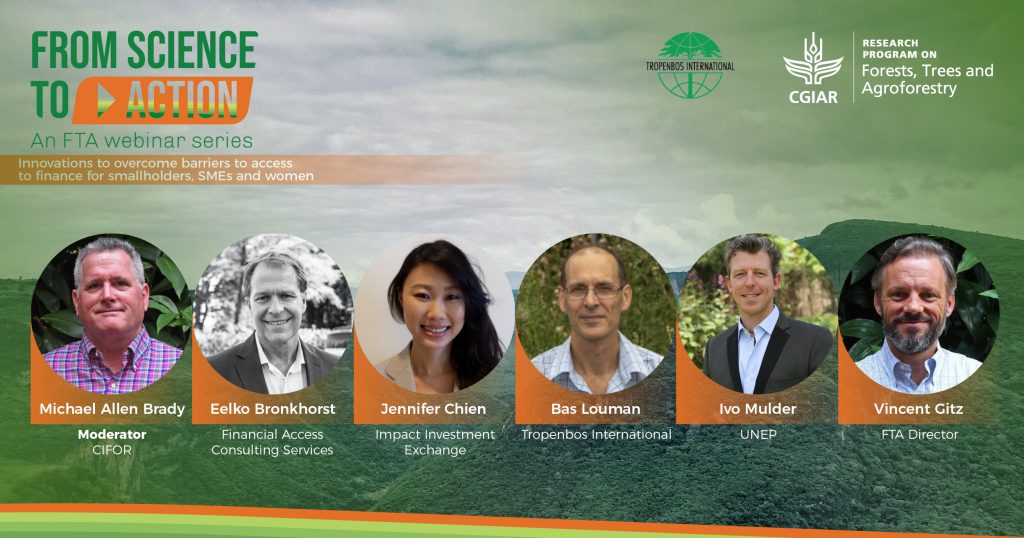
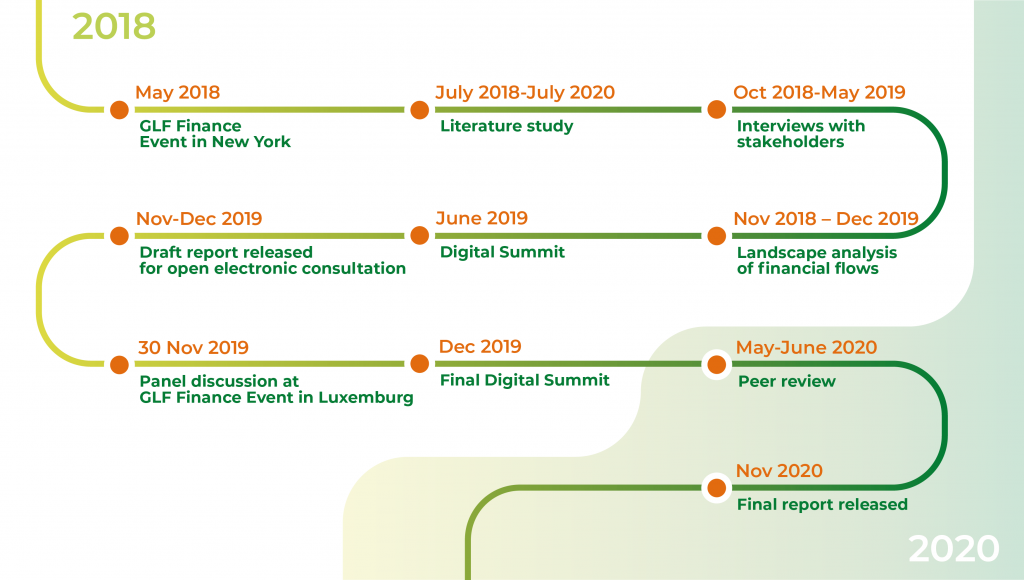
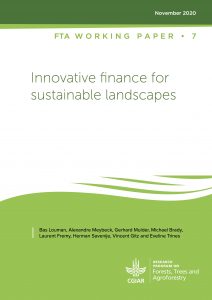
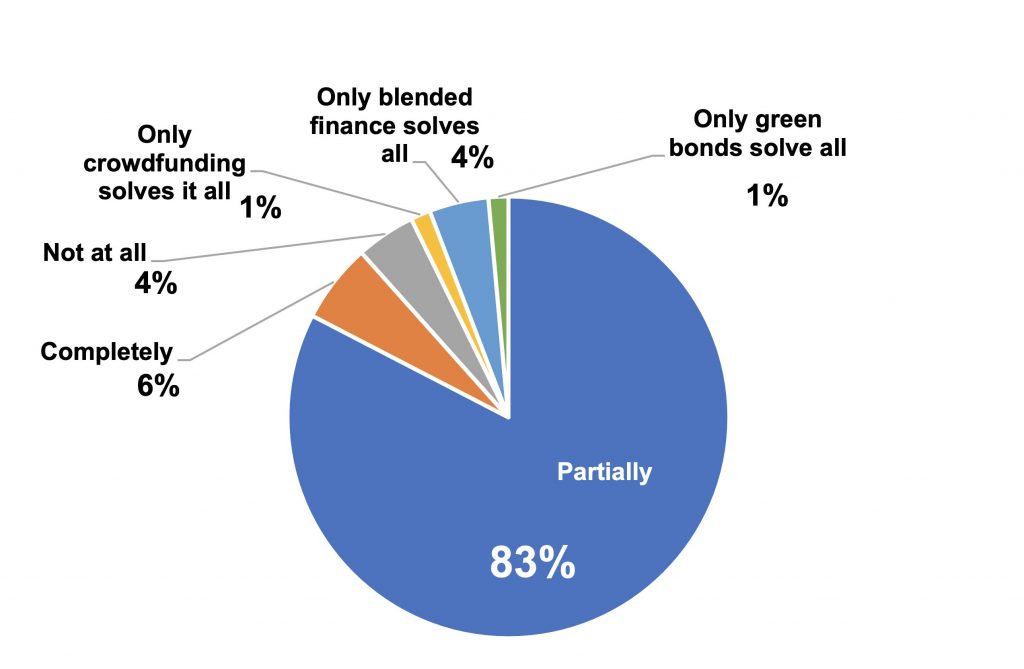
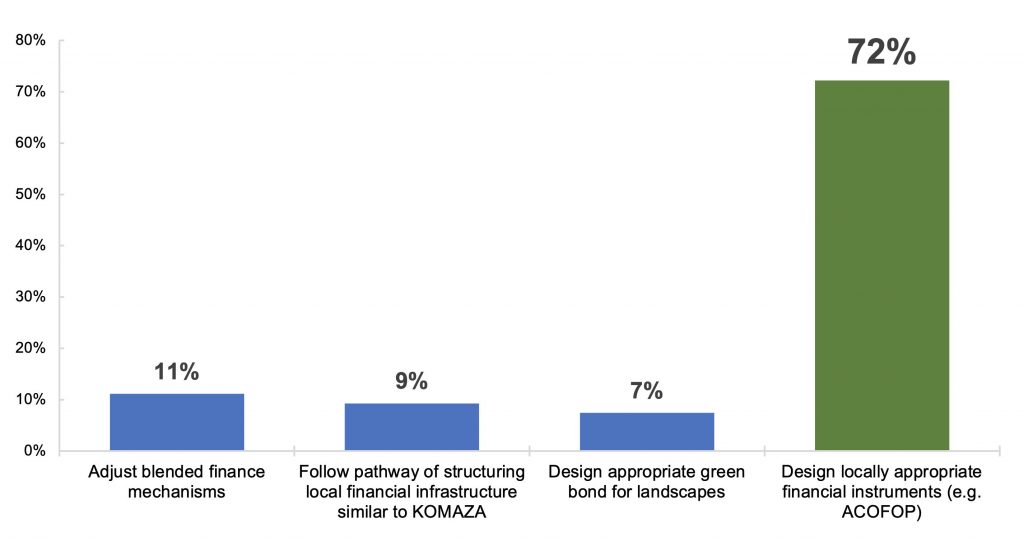
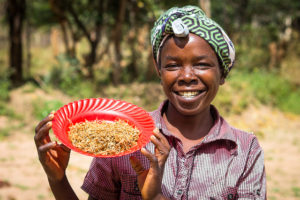



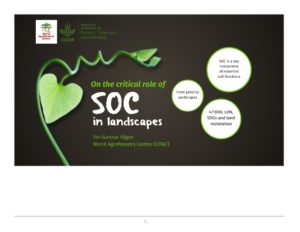
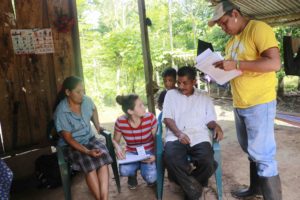 América Latina se encuentra en un momento crítico en lo cual varios gobiernos y sectores influyentes están desarrollando sus Planes Nacionales de Adaptación y Acciones Nacionalmente Apropiadas de Mitigación (NAP y NAMA, respectivamente, por sus siglas en inglés). Este webinar busca proveer hallazgos recientes de investigaciones empíricas en género y agroforestería en países latinoamericanos, a tomadores de decisiones de los sectores agropecuarios y ambientales y profesionales involucrados en el desarrollo rural en América Latina, con el fin de promover la integración de género en la formulación de políticas e intervenciones de cambio climático. Específicamente, los objetivos del webinar incluyen:
América Latina se encuentra en un momento crítico en lo cual varios gobiernos y sectores influyentes están desarrollando sus Planes Nacionales de Adaptación y Acciones Nacionalmente Apropiadas de Mitigación (NAP y NAMA, respectivamente, por sus siglas en inglés). Este webinar busca proveer hallazgos recientes de investigaciones empíricas en género y agroforestería en países latinoamericanos, a tomadores de decisiones de los sectores agropecuarios y ambientales y profesionales involucrados en el desarrollo rural en América Latina, con el fin de promover la integración de género en la formulación de políticas e intervenciones de cambio climático. Específicamente, los objetivos del webinar incluyen: Sarah-Lan Mathez es Etnobióloga e investigadora de ciencias sociales de la oficina latinoamericana del Centro Internacional de Investigación Agroforestal (ICRAF) basada en Lima, Perú. Tiene amplia experiencia laboral en proyectos de investigación, desarrollo y conservación ambiental en Latinoamérica y África. Durante los últimos 10 años, ha trabajado en la región andina en temas tales como: los conocimientos ecológicos indígenas, la diversidad biocultural, las innovaciones locales y la agroforestería. Tiene un doctorado en geografía humana de la Universidad de Berna, Suiza. En la actualidad, combina su trabajo en ICRAF con el puesto de investigadora principal en el Centre for Development and Environment en la Universidad de Berna y es editora asociada de la revista Mountain Research and Development.
Sarah-Lan Mathez es Etnobióloga e investigadora de ciencias sociales de la oficina latinoamericana del Centro Internacional de Investigación Agroforestal (ICRAF) basada en Lima, Perú. Tiene amplia experiencia laboral en proyectos de investigación, desarrollo y conservación ambiental en Latinoamérica y África. Durante los últimos 10 años, ha trabajado en la región andina en temas tales como: los conocimientos ecológicos indígenas, la diversidad biocultural, las innovaciones locales y la agroforestería. Tiene un doctorado en geografía humana de la Universidad de Berna, Suiza. En la actualidad, combina su trabajo en ICRAF con el puesto de investigadora principal en el Centre for Development and Environment en la Universidad de Berna y es editora asociada de la revista Mountain Research and Development. Tatiana Gumucio es Investigadora Postdoctoral en Género en el Área de Investigación de Análisis de Políticas (DAPA) del Centro Internacional de Agricultura Tropical (CIAT), basado en Cali, Colombia. Apoya la integración de género en el Programa de Investigación del CGIAR en Bosques, Árboles y Agroforestería (FTA). Recibió su doctorado en antropología de la Universidad de Florida. Está interesada en contribuir a la investigación contundente de género en relación a productos forestales no-maderables y árboles en fincas, con el propósito de informar la formulación de políticas e intervenciones eficaces y equitativas en la mitigación y adaptación al cambio climático.
Tatiana Gumucio es Investigadora Postdoctoral en Género en el Área de Investigación de Análisis de Políticas (DAPA) del Centro Internacional de Agricultura Tropical (CIAT), basado en Cali, Colombia. Apoya la integración de género en el Programa de Investigación del CGIAR en Bosques, Árboles y Agroforestería (FTA). Recibió su doctorado en antropología de la Universidad de Florida. Está interesada en contribuir a la investigación contundente de género en relación a productos forestales no-maderables y árboles en fincas, con el propósito de informar la formulación de políticas e intervenciones eficaces y equitativas en la mitigación y adaptación al cambio climático.